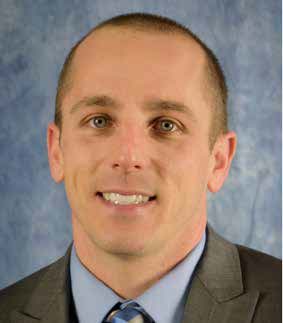Volume 23 | Issue 1
Click here to read the complete illustrated article as originally published or continue below to read the text article.
History shows that innovative thinking attracts more innovative thinking with “innovation sectors” clustering and growing due to knowledge-based economies. The quality of a company’s workers is key, but success is also driven by the entire ecosystem that surrounds it.
Neighborhood 91, an Additive Manufacturing (AM) production campus at Pittsburgh International Airport, will act as a catalyst for AM industrialization and innovation with the creation of a cost-efficient ecosystem and the collection of smart people. The economic impact of this campus will be big and built on the success of individual companies. To spur economic impact with the adoption of advanced manufacturing, we must address a specific problem for the manufacturer.
The bottom line: a company needs to make money and realize tangible benefits from advanced manufacturing adoption. Small wins combine to become big wins and the proverbial snowball is rolling and growing.
There are two critical success criteria for the adoption of an advanced manufacturing process:
Additive manufacturing, a suite of process technologies that build parts layer by layer, is proving itself to be a helpful tool for solving manufacturing problems across the product value chain from rapid design iterations and prototyping, to manufacture of short lead time tooling, and finally to production of end use parts and systems with higher performance than is possible with traditional manufacturing. Manufacturers are increasingly cognizant of how AM can help solve technical challenges for their businesses.
However, the path to a positive business case is not as clear cut.

Infographics courtesy of The Barnes Group.
To harness the technical opportunities presented by AM, a manufacturer must be able to make (or save) money using the technology. This can take the form of cost reduction, schedule reduction, technical risk reduction or performance improvement, all of which can be equated to someone making or saving money somewhere along the supply chain.
The AM process is just one step in a larger manufacturing chain, which can include material, printing, post-processing (machining or other surface finishing), heat treatment, testing, and inspection. Today, that supply chain is fragmented with process providers often separated by thousands of miles. So, what are some of the biggest challenges that manufacturers adopting AM face?
Neighborhood 91 is the first development in the world to both condense and connect all components of the Additive Manufacturing (AM) supply chain into one powerful production ecosystem. Located adjacent to Pittsburgh International Airport, the Innovation Campus broke ground in December 2018 with plans to feature office space, warehouses and industrial manufacturing, among other facilities. Neighborhood 91 will house an ecosystem of businesses that all contribute to the additive manufacturing industry, including those that specialize in powder production, additive manufacturing (a.k.a. 3D printing), heat treatment, post-processing, testing and analysis.
The 195-acre campus will offer the following:
These aspects of the Neighborhood 91 campus will enable tenants to realize immediate cost reductions due to an affordable and stable energy source, an efficient gas system, attractive leasing rates, and a reduction in the principal and interest on capital expenditures. Sustained impacts will be realized by the clustering of innovative companies and a partnership with the University of Pittsburgh for the development of a world class workforce and for research activities to feed campus innovation for generations.
Neighborhood 91 directly solves challenges faced by manufacturers. It lowers the cost of doing business and boosts innovation therefore minimizing the barriers of entry for a new technology. The concentration of skilled people and sharing of advanced manufacturing capabilities at the campus creates agglomeration economies and labor marketing pooling which will drive decreased learning curves and reduce underutilized resources. It also enables brand new business models that create new sources of revenue for companies.
The Neighborhood 91 impact is summarized into (6) key areas:
If big economic impact requires a series of small economic impacts, then it is all about driving change for individual companies. Let’s look at a few specific opportunities Neighborhood 91 creates for manufacturers across the industrial supply chain.
Arencibia, a founding member of Neighborhood 91, is an industrial gas producer which is enabling low cost advanced manufacturing by installing onsite gas storage and recycling ready to be tapped by tenants. These expensive gases are used in powder production, printing, and heat treating; therefore, a cost reduction will have a significant impact on the recurring cost for part production by the manufacturers on campus.
Company B is a service bureau who produces parts made using powder bed fusion. They have serial production contracts but are struggling to maintain a sustainable profit margin due to a variety of reasons including overhead costs, customer pricing pressure, and maintenance of a large variety of equipment (required to retain schedule control). Neighborhood 91 offers a path to reduced overhead costs and a concentrated supply chain where the company can decide if they use a partner to deliver post-processing solutions versus maintaining the in-house capability.
Company C is a system manufacturer who is adopting AM for production support, like tooling, and is moving into end part production. They have an application that will hugely benefit from incorporating cold spray into the manufacturing process, however they only have enough production volume to utilize 50 percent of the machine capacity. Burdening the business case with the purchase of an entire machine introduces a level of business risk that has stalled the adoption of a winning technical solution. Neighborhood 91 offers a shared asset option to lower cost and risk and enable access to a machine and achieve the adoption business case.
The individual Neighborhood 91 tenants benefit from the growing Pittsburgh ecosystem, and the region will benefit from the combined economic growth. The grand total Neighborhood 91 investment is forecast at $570M over 10 years with the creation of 1,000 jobs. An economic impact analysis shows this investment will create a Value-Added Impact of $3B and create over 6,000 jobs.
That is, by any measure, a very big economic impact.
ABOUT THE AUTHORS

Laura Ely
LAURA ELY
Laura Ely is the ADDvisor® Services Leader at The Barnes Group Advisors and a strategic advisor for Neighborhood 91. She leads a team of industry recognized additive manufacturing experts in providing technical and strategic solutions to solve customer problems. Her combination of technical, strategic and communication skills make her uniquely positioned to help companies drive technological change. Learn more: https://www.thebarnes.group/ | Laura@thebarnes.group.

David Storer
DAVID STORER
David Storer is Director of Business Development at Allegheny County Airport Authority. The Allegheny County Airport Authority operates both Pittsburgh International Airport and Allegheny County Airport and is dedicated to the safety and security of passengers, employees and all other users of the airport. The Airport Authority oversees all aspects of airport operations including new development, environmental issues, airline and tenant management as well as airfield operations. He oversees commercial development of more than 8,800 acres for the ACAA and is the key project manager for the Neighborhood 91 development. Learn more: https://neighborhood91.com/.
In this episode, I sat down with Beejan Giga, Director | Partner and Caleb Emerson, Senior Results Manager at Carpedia International. We discussed the insights behind their recent Industry Today article, “Thinking Three Moves Ahead” and together we explored how manufacturers can plan more strategically, align with their suppliers, and build the operational discipline needed to support intentional, sustainable growth. It was a conversation packed with practical perspectives on navigating a fast-changing industry landscape.